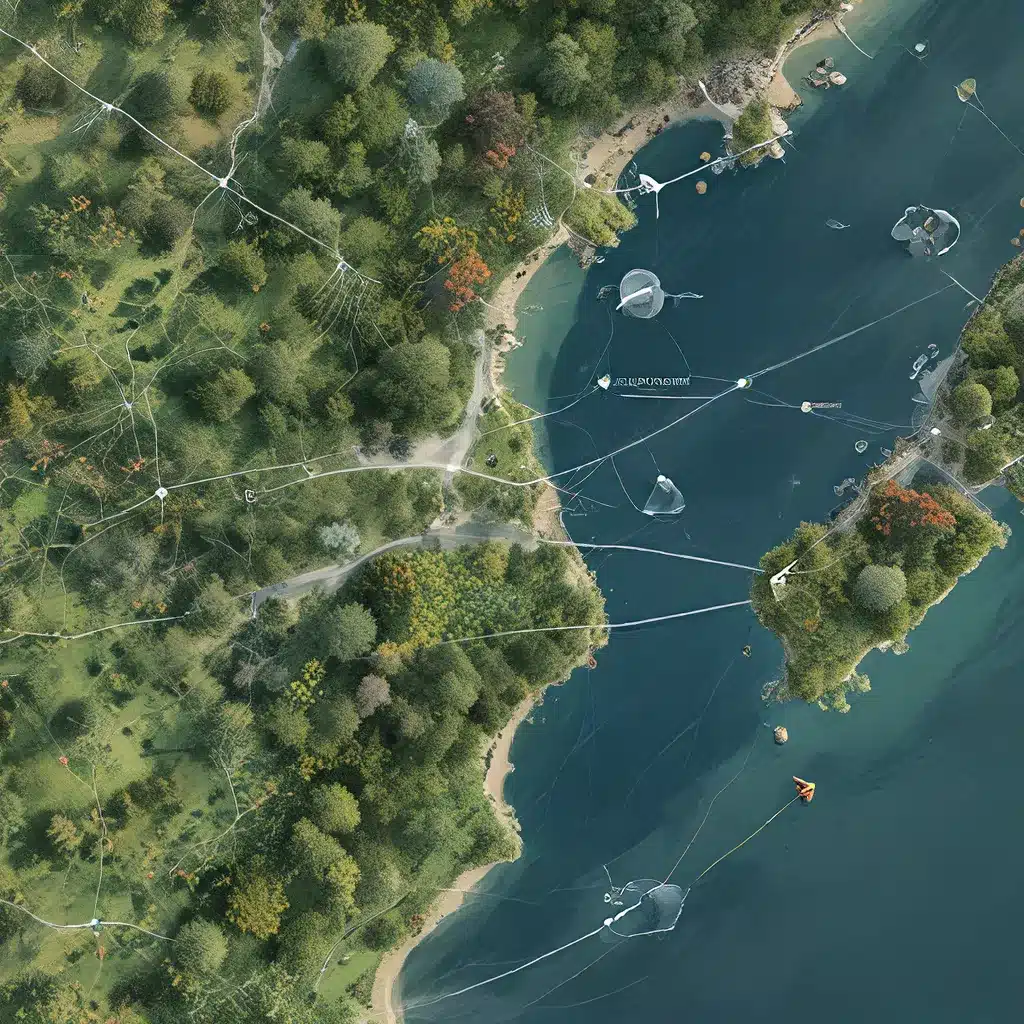
Exploring the Frontiers of Sensor Networks and IoT
In the rapidly evolving landscape of modern technology, the interconnected realms of sensor networks and the Internet of Things (IoT) have emerged as pivotal drivers of innovation. These dynamic ecosystems, where vast arrays of sensors seamlessly integrate with intelligent devices and data-driven platforms, are transforming the way we monitor, analyze, and interact with our environment.
At the heart of this technological revolution lies the intricate design and deployment of sensor networks. These complex systems, comprising an array of sensors, communication protocols, and data management infrastructures, enable the real-time collection, transmission, and processing of vast amounts of environmental data. From tracking air quality and water levels to monitoring wildlife and weather patterns, sensor networks have become indispensable tools for environmental monitoring and resource management.
Advancements in sensor technology have unlocked new possibilities, allowing for the development of low-power, high-precision sensors that can be seamlessly integrated into a wide range of IoT applications. These sensors, coupled with the ubiquity of wireless connectivity and the increasing computational power of edge devices, have paved the way for the emergence of smart cities, precision agriculture, and intelligent transportation systems, among other innovative applications.
The Anatomy of Sensor Networks
At the core of a sensor network lies the sensor node, a compact and versatile device capable of collecting, processing, and transmitting environmental data. These nodes, often powered by energy-efficient microcontrollers and equipped with a variety of sensing modalities, form the building blocks of a sensor network.
The design of sensor networks involves the careful consideration of several key elements, including:
-
Network Topology: The arrangement and interconnectivity of sensor nodes can follow various topologies, such as star, mesh, or hierarchical designs, each with its own advantages and trade-offs in terms of scalability, reliability, and energy efficiency.
-
Communication Protocols: The choice of wireless communication protocols, such as ZigBee, LoRaWAN, or Bluetooth Low Energy (BLE), is crucial in ensuring reliable and energy-efficient data transmission within the network.
-
Data Management: Sensor networks generate vast amounts of data, which necessitates the implementation of robust data management strategies. This includes data aggregation, compression, and analytics to ensure efficient storage, processing, and extraction of meaningful insights from the collected information.
-
Energy Management: Sensor nodes, often deployed in remote or inaccessible locations, require energy-efficient designs to maximize their operational lifespan. Techniques such as duty cycling, energy harvesting, and power management algorithms play a crucial role in optimizing the energy consumption of sensor networks.
Sensor Network Applications and Trends
The versatility of sensor networks has enabled their widespread adoption across a diverse range of industries and applications, each harnessing the power of real-time data collection and intelligent decision-making.
Smart cities have leveraged sensor networks to optimize traffic management, waste management, and energy distribution, leading to improved urban planning and resource utilization. In the realm of precision agriculture, sensor-enabled precision farming techniques have revolutionized crop monitoring, irrigation, and yield optimization.
Environmental monitoring is another prominent application, with sensor networks deployed for air quality monitoring, water quality assessment, and wildlife tracking. These systems not only provide valuable data but also enable early warning systems and informed decision-making to address pressing environmental challenges.
As the IoT landscape continues to evolve, sensor networks are also finding their way into industrial automation, healthcare, and transportation sectors, transforming the way these industries operate and interact with their environments.
Security and Privacy Challenges
While the benefits of sensor networks and IoT are undeniable, the increasing interconnectivity and data-driven nature of these systems also pose security and privacy challenges that must be addressed.
Sensor nodes, often operating in remote or uncontrolled environments, are vulnerable to various threats, including physical tampering, unauthorized access, and data breaches. Securing these devices, the communication protocols, and the underlying data management infrastructure is crucial to ensuring the integrity, confidentiality, and availability of the sensor network ecosystem.
Strategies such as secure firmware updates, encryption, and access control mechanisms are essential in mitigating these security risks. Additionally, the implementation of privacy-preserving data management techniques, like data anonymization and differential privacy, can help safeguard the sensitive information collected by sensor networks.
Toward a Sustainable Future
As sensor networks and IoT continue to transform the way we interact with our environment, the focus on energy efficiency and sustainability has become increasingly crucial.
Energy-efficient sensor network design is a key priority, with the development of low-power sensor nodes, energy-harvesting technologies, and intelligent power management algorithms. These advancements not only extend the operational lifespan of sensor networks but also contribute to the reduction of their environmental impact.
The integration of renewable energy sources, such as solar or wind power, with sensor networks has further enhanced their sustainability and resilience, making them less reliant on traditional power grids and more adaptable to changing environmental conditions.
Moreover, the data-driven insights generated by sensor networks are instrumental in informing sustainable decision-making and resource management. From urban planning to precision agriculture, these insights can drive eco-friendly policies, optimize resource utilization, and mitigate the effects of climate change.
Conclusion: Unlocking the Potential of Sensor-Enabled Ecosystems
The dynamic world of sensor networks and IoT is a testament to the power of technology to transform our understanding and interaction with the environment. By seamlessly integrating sensor-enabled devices, intelligent data processing, and sustainable design principles, these networked ecosystems are paving the way for a future where environmental monitoring, resource management, and decision-making are more informed, efficient, and eco-friendly than ever before.
As we continue to explore the frontiers of this rapidly evolving field, the challenges of security, privacy, and energy sustainability must be at the forefront of our efforts. By addressing these concerns and harnessing the full potential of sensor-enabled technologies, we can unlock a new era of sustainable, connected, and data-driven solutions that will positively impact our lives and the world around us.
Explore the sensor-networks.org website to delve deeper into the latest advancements, use cases, and research in the realm of sensor networks and IoT.